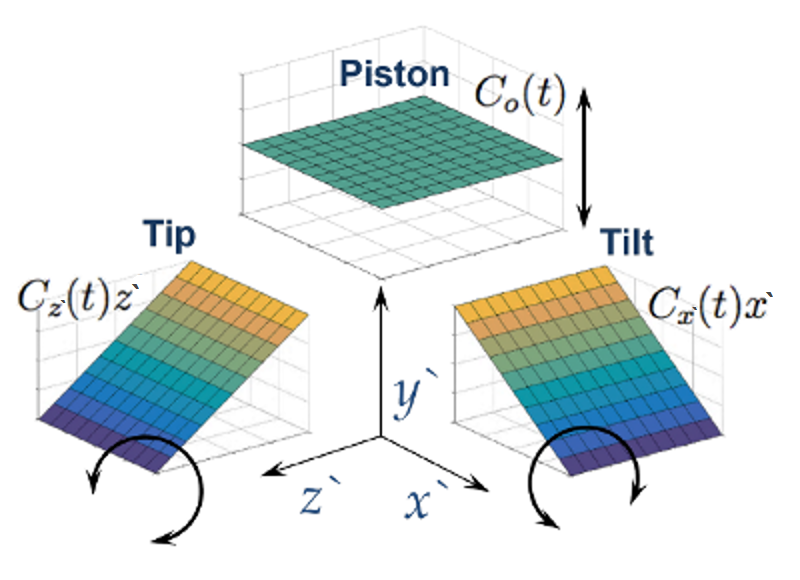The aero-optical effects () in the near-wall regime are expressed in terms of phase distortions of
electromagnetic waves:
(11–1) |
where is the fluctuating index of refraction at the ray grid points, as calculated
using the Gladstone-Dale relation coefficient (
):
(11–2) |
The phase of the optical wavefront that propagates in the y`-direction
for a distance can be represented by the optical path length (
):
(11–3) |
The wavefront phase distortions are represented by the relative phase difference or optical
path difference (). The instantaneous
and
are composed of mean and fluctuating terms:
(11–4) |
(11–5) |
where is the steady-lensing component of
defined as
(11–6) |
and is the fluctuations of
, that is, the
with the steady-lensing component removed, defined as
(11–7) |
Note that in the previous equations, the angle brackets (
) indicate spatial averaging.
can be described as being composed of low order and high order components
(referred to as
and
, respectively):
(11–8) |
is the sum of the jitter components, that is, the unsteady spatially-constant
term (referred to as the "piston" and represented by
) and the unsteady spatially-linear terms (referred to as the "tilt" and "tip",
and represented by
and
, respectively) from the wavefront distortions:
(11–9) |
Note that the piston, tilt, and tip components are calculated using the least-square method by minimizing the following function:
(11–10) |



